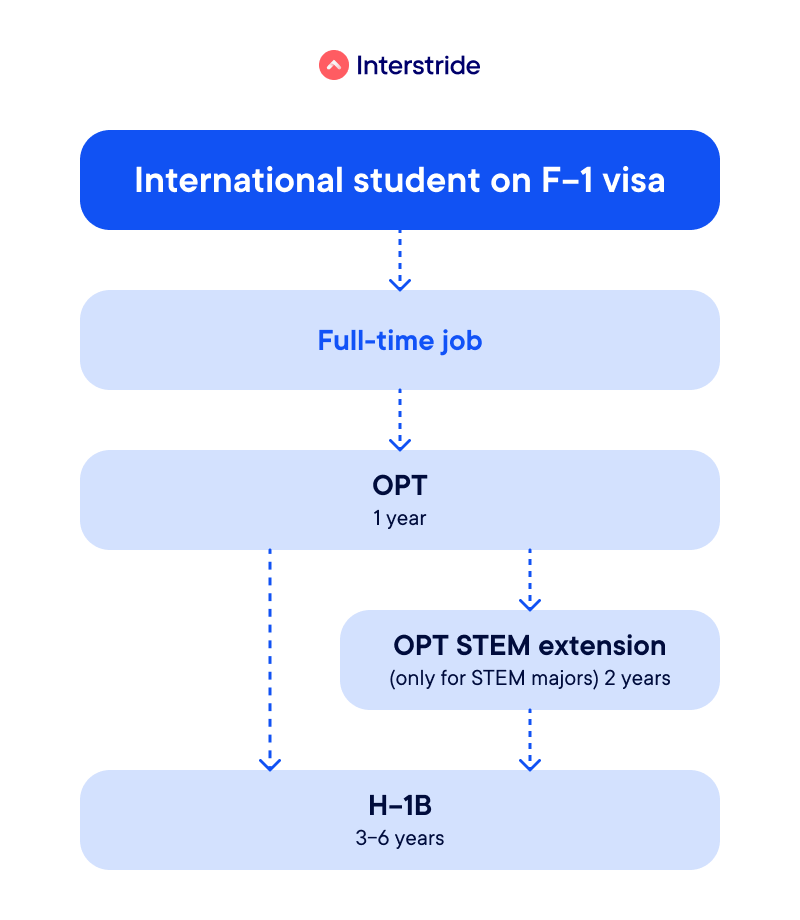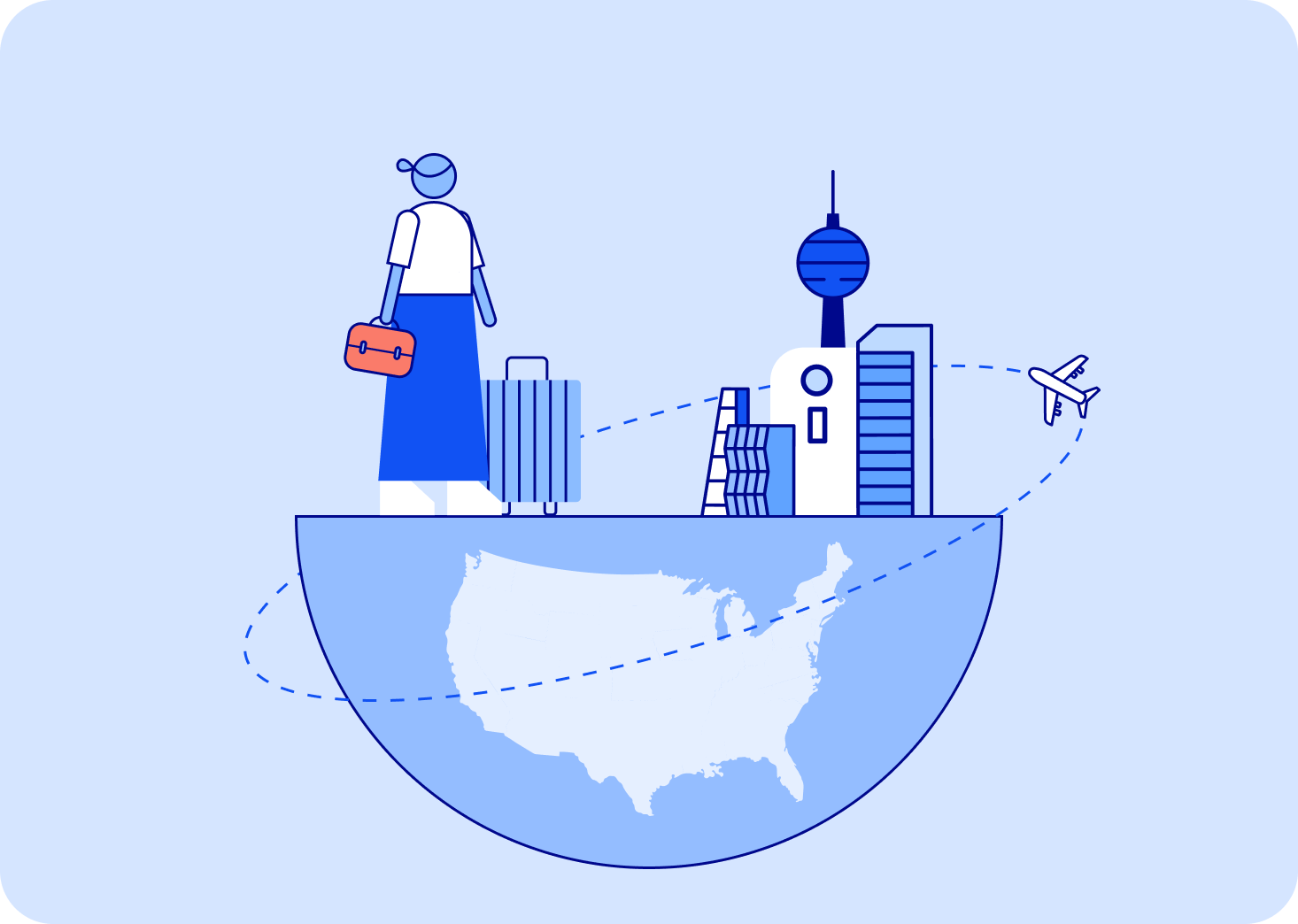Job searching as an international student comes with unique challenges—work authorization, visa sponsorship, and adapting to a new job market. It can feel overwhelming, but with a clear strategy and the right approach, you can navigate the process with confidence. By understanding key timelines and using job search strategies for international students, you can maximize your opportunities and set yourself up for success in the US.
Common job search mistakes international students make and how to avoid them
Many international students arrive in the US expecting a straightforward job search, only to find it more complex than anticipated. Understanding common pitfalls and taking a proactive approach can make all the difference in landing the right opportunity.
- Taking a passive approach – Companies rarely seek out entry-level candidates directly. Start networking and researching early—ideally in your first or second year—to build connections and open doors.
- Not understanding the US job market – Many employers prioritize cultural fit as much as skills. Show how your values align with the company’s mission and workplace culture to improve your chances.
- Not optimizing application materials – Many employers use applicant tracking systems (ATS) to filter resumes. Tailoring your resume and cover letter with ATS-friendly formatting and relevant keywords ensures they reach a hiring manager.
- Missing OPT deadlines – OPT provides up to 1 year of work authorization or 3 years for STEM majors, but deadlines are strict. Use Interstride’s OPT calculator to find your ideal OPT start date and application deadline. Put those dates in your calendar, so you don’t forget them.
- Relying solely on online applications – 80% of jobs are filled through networking and 70% of jobs are never advertised. Having an internal referral makes you 7 times more likely to get hired.
Top job search strategies for international students
Landing a job in the US as an international student requires more than just submitting applications—it takes strategy and persistence. These tips will help you tackle the job hunt effectively and position yourself for success.
1. Establish your unique value right away
Your job search is an opportunity to show employers what sets you apart. Highlight your cultural perspective, adaptability, and commitment, which can drive innovation and bring value to a company. Additionally, emphasize your long-term dedication as a potential visa-sponsored employee.
Since work experience is a top priority for many employers, start building it early through internships, part-time roles, or academic projects. Be prepared to explain what you learned and how your experiences align with your target industry.
Key areas to showcase:
- Professional experience – Internships, part-time jobs, academic projects, and relevant coursework.
- Industry knowledge – Understanding of trends and challenges in your field, gained through studies or real-world exposure.
- Functional expertise – Concrete skills developed through coursework, internships, or self-driven learning.

By clearly communicating your value and aligning your skills with employer needs, you can make a strong case for why you’re the right candidate.
2. Look at the data. Target employers that hire international students.
Not all companies sponsor international employees—but many do. Focus your job search on employers with a history of hiring international talent. Companies that have sponsored before are familiar with the process and more likely to do it again.
Use tools like Interstride Visa Insights to research companies that have sponsored in the past, the positions they hired for, and average salary expectations. Your university career center or ISSS office can also provide insights into where international alumni have worked.
3. Know your visa options inside out
To work in the US, you need proper work authorization. Knowing your options early will help you make informed career decisions.
- Curricular Practical Training (CPT) – temporary work authorization that allows F-1 students to accept internships or part-time or full-time employment in their academic field after one year of full-time study
- Optional Practical Training (OPT) – 12-month work authorization after graduation
- OPT STEM extension – a 24-month OPT extension for graduated F-1 students with degrees in Science, Technology, Engineering, or Math (STEM)
- H-1B visa – this long-term work authorization option allows international employees to work in the US for up to six years, but it is subject to annual quotas

This is just the beginning—there are many visa options beyond H-1B after OPT expires. To explore the best path for your situation, consult an immigration lawyer about alternatives like O-1 (extraordinary ability), L-1 (intra-company transfer), NIW (National Interest Waiver), or EB-1 (priority worker for outstanding professionals). These pathways may offer long-term career opportunities based on your skills and achievements.
4. Connect with the right people
Networking is one of the most powerful tools for uncovering job opportunities and making meaningful connections with potential employers. A strategic approach—knowing who to connect with, where to find them, and how to engage—can significantly improve your job search success.
Start by researching target companies and identifying key decision-makers. Hiring managers, not HR personnel, are the ones who make final hiring decisions and can advocate for your visa sponsorship. Focus on building relationships with professionals in your industry who can offer guidance and open doors.
Where to network:
- LinkedIn – A top resource for connecting with current employees at your target companies. Personalize your messages by referencing something specific from their profile to build a genuine connection.
- Existing professional and personal network – Speak with international alumni to learn about their experience and job search strategies. Ask professors for introductions to former students or join professional, alumni, or mentorship organizations in your field.
- On-campus career fairs, clubs, and employer events – Universities host multiple career fairs throughout the year, some specifically for international students. Joining student clubs can also help you meet peers with similar professional interests.
- University job postings – Use job boards tailored for international students to find employers open to CPT, OPT, or work visa sponsorship. Check out Interstride’s career portal for full-time, part-time, and internship opportunities based on your work authorization or visa type.
- Off-campus networking and recruiting events – Attend industry-specific meetups and networking events hosted by organizations consistently involved in the community. Reputable groups like the US Department of State’s EducationUSA, local chambers of commerce, and industry associations often provide great networking opportunities for international students.
5. Harness the power of informational interviews
Once you’ve connected with professionals in your industry, take it a step further with informational interviews. These informal conversations help you learn more about a company, expand your network, and position yourself as a strong candidate—without directly asking for a job. Informational interviews can range anywhere from 10 minutes to 1 hour, so always be mindful of your contact’s time.
How to request an informational interview
Reach out with a short, polite email requesting a quick chat. This could be someone you met on LinkedIn, at a career fair, or during a networking event. If you meet in person, follow up via email.
Sample email request for an informational interview:
Dear [Name],
I hope you’re doing well! I’m a [Major] student at [School Name], exploring opportunities in [Career Interest]. Given your role as [Their Job] at [Company Name], I’d love to learn more about your career path and insights into the industry.
Would you be open to a quick 15-minute Zoom or coffee chat next week? I’d really appreciate the opportunity to hear about your journey.
Looking forward to your thoughts! Thanks for your time.
Best,
[Your Name]
Before your call, research your contact’s role and company and prepare open-ended questions to keep the conversation flowing. Instead of “Do you like your job?”, ask “What do you like most about your job?” to encourage a more detailed response.
Sample informational interview questions:
- How did you get into your current role?
- What was your academic and professional journey like?
- What skills are most valuable for landing an internship or job in your field?
- What entry-level opportunities exist at your company?
- What is the workplace culture like?
- What’s your favorite project you’ve worked on and why?
After the meeting: Follow up and leverage referrals
Send a brief thank-you email, highlighting a key takeaway from your conversation and expressing appreciation for their time. Stay connected by engaging with their content on LinkedIn or checking in periodically. If a relevant job opens at their company, apply first, then request a referral. Referred candidates often receive priority consideration, making this a valuable step in your job search.
Own your job search and stand out as international talent
A successful job search starts with a clear strategy, flexibility, and persistence. Stay informed on visa options and sponsorship trends, leverage networking opportunities, and use resources like LinkedIn and career fairs to build connections. The process can be challenging, but staying proactive and confident will open doors.
Remember, as an international student, you bring unique value to the US job market—don’t be afraid to showcase it.

